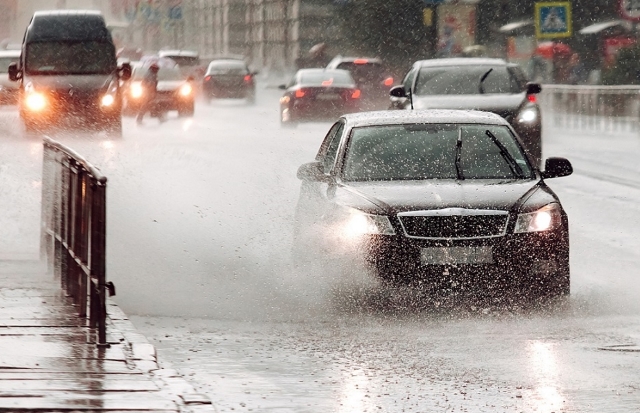Climate change to bring heavier rainfall events
23 Mar 2020 04:31 PM
The rise of global temperature is the most easily understood metric of climate change. Its outwardly simple concept has instant appeal as it captures the key element of climate change – the warmer the planet becomes, the more the climate changes.

But aside from temperature, climate change will affect our atmosphere in other ways too. On World Met Day (23 March 2020) we highlighted some recently published research exploring the subtle, but no less significant, relationship between climate change and atmospheric water vapour.
It’s long been realised that the warmer the atmosphere becomes, the more moisture in can contain. This is a well-known principle of meteorology and weather forecasting. A simple interpretation is that for every 1.0 °C rise in atmospheric temperature then water content can increase by around seven per cent. But recent research – led by Øivind Hodnebrog of CICERO (Center for International Climate Research), in Oslo, and supported by a range of organisations including the Met Office – has explored individual elements and has found that the relationship is more complex.
Dr Timothy Andrews is a climate scientist based at the Met Office. He yesterday said:
“The amount of water in the atmosphere has direct consequences for all life on earth: too little for extended periods can lead to droughts; and too much can lead to floods. Given that we’re all dependent on atmospheric water every day of our lives, this is a vital area of research.
“To begin with let’s think of atmospheric water in the context of a reservoir. Evaporation from the sea and land, and water released from plants – a process known as transpiration – are like feeder streams helping to keep the reservoir topped up. Conversely, rainfall and other forms of precipitation are like outflows, draining the reservoir. We can extend the analogy further by saying that a warming atmosphere is like digging the reservoir deeper so that it can potentially hold more water.”
To understand more about the frequency and intensity of rainfall events and other precipitation, the Met Office contributed to a multi-national paper looking at the lifetime of water vapour in the atmosphere: water vapour lifetime (WVL).
WVL is the number of days that water vapour typically stays in the atmosphere before it is rained out. Climate change is causing the atmosphere to warm, which allows the air to hold more water, increasing WVL. Tim Andrews added: “This study investigates how different greenhouse gases and aerosols can cause WVL to change. We used the results from 11 global climate models where we explored the effects on water vapour lifetime by altering (perturbing) the concentrations of carbon dioxide, methane, solar irradiance, black carbon, and sulphate. For every degree of temperature increase, the air can hold roughly seven per cent more water, and global-mean precipitation increases by between one to three per cent. This results in an overall moistening trend.
Tim Andrews added:
“Computer models have supported weather observations showing a historical increase in WVL, causing a slowdown of the water cycle and leading to heavier rainfall events.
“Our study has shown that WVL has already increased by 4-5% since the pre-industrial period, and half of this was due to fast atmospheric processes. We also found that between 1986-2005 and 2081-2100 – under a scenario assuming high-emissions of greenhouse gases – WVL is projected to increase from eight days to ten, an increase of 25%. This is expected to result in heavier rainfall events in the future.”
The paper – Water vapour adjustments and responses differ between climate drivers – is published in the journal, Atmospheric Chemistry and Physics.
World Meteorological Day takes place every year on 23 March and commemorates the coming into force on 23 March 1950 of the Convention establishing the World Meteorological Organization. It showcases the essential contribution of National Meteorological and Hydrological Services to the safety and wellbeing of society and is celebrated with activities around the world. The themes chosen for World Meteorological Day reflect topical weather, climate or water-related issues.